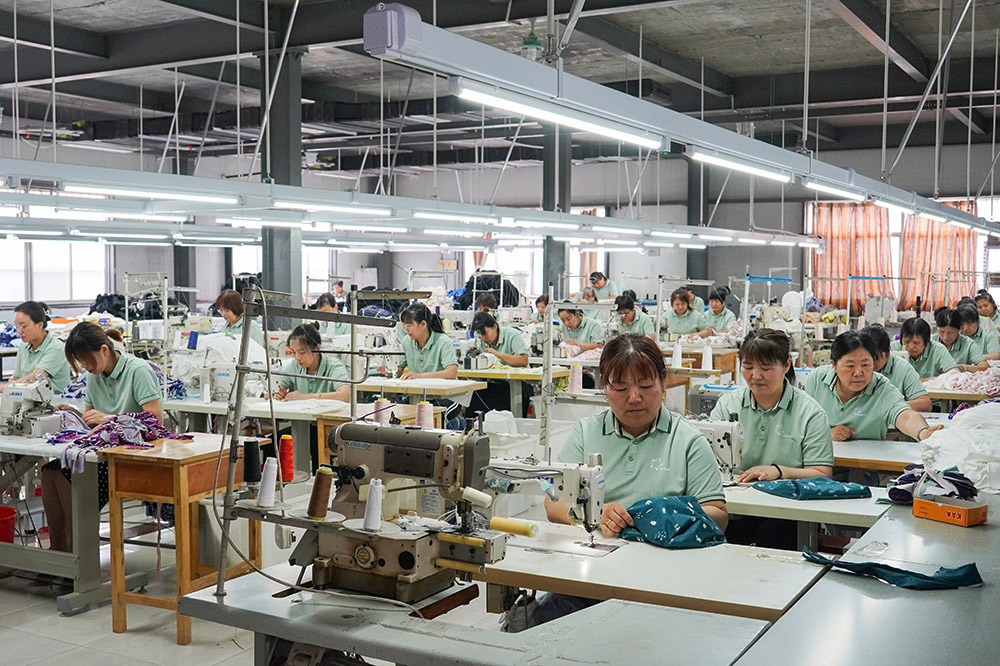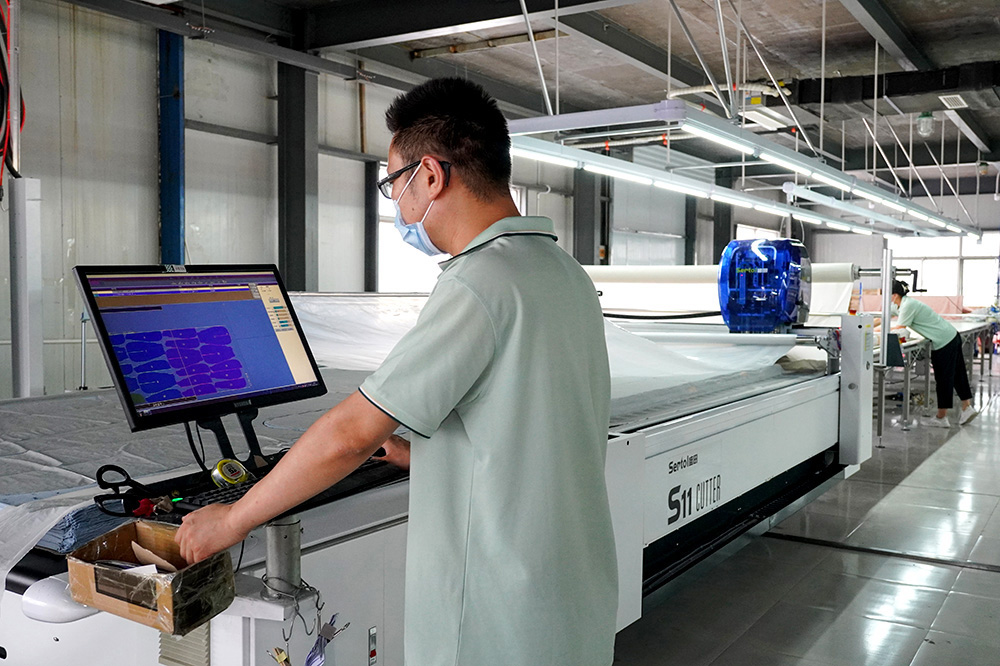
Introduction
In the dynamic world of baby and children's clothing, collaborating with manufacturers plays a pivotal role in ensuring the success of your business. Building robust partnerships not only enhances the quality of your products but also streamlines operations, fosters innovation, and drives growth. This article delves into the essential aspects of forging and maintaining strong manufacturer relationships, providing comprehensive insights to help you excel in this competitive industry.
Understanding the Importance of Collaboration
Effective collaboration with manufacturers is foundational for any successful clothing business. By working closely with manufacturers, businesses can ensure that their products meet the highest standards of quality, safety, and design. This partnership is particularly crucial in the baby and children's clothing sector, where customers expect nothing less than perfection for their little ones.
Why Partner with Manufacturers?

Partnering with manufacturers allows businesses to leverage the expertise and capabilities of experienced professionals. Manufacturers bring a wealth of knowledge in fabric selection, production techniques, and quality control, ensuring that your products are crafted to perfection. Additionally, collaborating with manufacturers can significantly reduce production costs and lead times, enabling businesses to respond swiftly to market demands.
The Benefits of Strong Partnerships
Strong partnerships with manufacturers offer numerous benefits, including:
Enhanced Quality Control: Consistent quality standards are maintained across all production batches.
Cost Efficiency: Bulk production reduces costs, providing better margins.
Innovation: Manufacturers often introduce new technologies and processes that can lead to product innovation.
Scalability: Reliable manufacturers can handle increased production as your business grows.
Finding the Right Manufacturer
Researching Potential Partners
Identifying the right manufacturer begins with thorough research. Look for manufacturers with a proven track record in producing high-quality baby and children's clothing. Online platforms, industry trade shows, and referrals from other businesses can be valuable resources for finding potential partners.
Evaluating Manufacturer Capabilities
Once you have a list of potential manufacturers, evaluate their capabilities. Consider factors such as:
- Production Capacity: Can the manufacturer handle your order volume?
- Technological Proficiency: Do they use modern, efficient machinery?
- Quality Assurance Processes: What measures do they have in place to ensure product quality?
Building a Strong Relationship
Effective Communication
Open and honest communication is the cornerstone of a strong manufacturer relationship. Regular updates, clear instructions, and feedback loops ensure that both parties are aligned and any issues are promptly addressed.
Setting Clear Expectations
Clearly outline your expectations regarding product quality, delivery timelines, and cost. This helps prevent misunderstandings and ensures that both parties are working towards the same goals.
Negotiating Terms and Conditions
Effective negotiation is key to establishing a mutually beneficial partnership. Focus on achieving a fair agreement that covers all aspects of the collaboration, including payment terms, delivery schedules, and quality standards.
Understanding Pricing Models
Understanding the manufacturer’s pricing models is crucial. Ensure that you are aware of all costs involved, including materials, labor, and any additional charges. This helps in budgeting and pricing your products competitively.
Contract Essentials
A well-drafted contract is essential for protecting your interests. Include clauses covering:
- Intellectual Property: Protect your designs and brand.
- Confidentiality: Safeguard sensitive business information.
- Dispute Resolution: Outline processes for handling disagreements.
Ensuring Quality Control
Establishing Quality Standards
Set clear, stringent quality standards for your products. Provide detailed specifications and conduct regular quality checks to ensure compliance.
Regular Inspections and Audits
Conduct regular inspections and audits of the manufacturer’s facilities. This helps in identifying potential issues early and maintaining high-quality production standards.
Managing Production Timelines
Creating Realistic Schedules
Work with your manufacturer to create realistic production schedules. Factor in lead times for materials, production, and shipping to ensure timely delivery of products.
Handling Delays and Setbacks
Delays are inevitable in any production process. Develop contingency plans and maintain open communication with your manufacturer to address and mitigate delays effectively.
Collaborative Design and Innovation
Working Together on Product Development
Involve your manufacturer in the product development process. Their insights can lead to improved designs and more efficient production methods.
Incorporating Feedback and Improvements
Encourage feedback from your manufacturer and be open to making improvements. Continuous improvement is key to staying competitive and meeting customer expectations.
Sustainability and Ethical Practices
Promoting Eco-Friendly Materials
Sustainability is increasingly important in the clothing industry. Collaborate with manufacturers who use eco-friendly materials and sustainable production practices.
Ensuring Fair Labor Practices
Ensure that your manufacturer adheres to fair labor practices. This not only protects workers' rights but also enhances your brand’s reputation.
Leveraging Technology
Using Digital Tools for Collaboration
Digital tools can streamline collaboration. Use project management software, communication platforms, and design tools to facilitate efficient and effective partnership.
Automating Processes
Automation can enhance efficiency and reduce errors. Work with manufacturers who utilize automated processes for production, quality control, and inventory management.
Addressing Common Challenges
Overcoming Communication Barriers
Communication barriers, especially in international collaborations, can pose challenges. Use clear, simple language and employ translators if necessary to ensure mutual understanding.
Dealing with Cultural Differences
Cultural differences can impact business interactions. Take the time to understand and respect cultural norms and practices to build a strong, respectful partnership.
Case Studies of Successful Collaborations
Example 1: Small Business Success Story
A small baby clothing brand partnered with a local manufacturer, resulting in improved product quality and reduced costs. This collaboration enabled the brand to expand its product line and increase market share.
Example 2: Large Scale Partnership
A large children’s clothing company collaborated with an overseas manufacturer, leveraging their advanced production capabilities. This partnership led to the introduction of innovative products and significant market growth.
Monitoring and Adapting Strategies
Keeping Up with Industry Trends
Stay updated with industry trends and innovations. Regularly review and adapt your strategies to remain competitive and meet evolving customer demands.
Adapting to Market Changes
Market conditions can change rapidly. Work with your manufacturer to quickly adapt to new trends, consumer preferences, and regulatory requirements.
Legal Considerations
Understanding International Trade Laws
If working with international manufacturers, ensure compliance with all relevant trade laws and regulations. This includes import/export regulations, tariffs, and trade agreements.
Protecting Intellectual Property
Protect your designs and trademarks through appropriate intellectual property laws. This safeguards your brand and ensures your unique products are not copied or misused.
Conclusion
Building strong partnerships with manufacturers is essential for the success of your baby and children’s clothing business. Through effective collaboration, clear communication, and a focus on quality and innovation, you can create a robust supply chain that supports your business goals and drives growth.
FAQs
Q1: How do I choose the right manufacturer for my business?
Research potential partners, evaluate their capabilities, and conduct thorough background checks.
Q2: What should I include in a manufacturing contract?
Include clauses on intellectual property, confidentiality, quality standards, and dispute resolution.
Q3: How can I ensure quality control in manufacturing?
Establish clear quality standards, conduct regular inspections, and maintain open communication with your manufacturer.